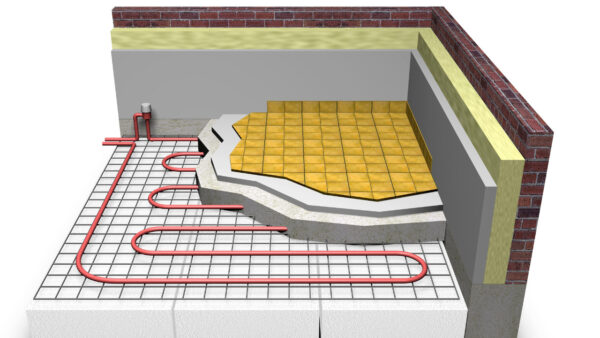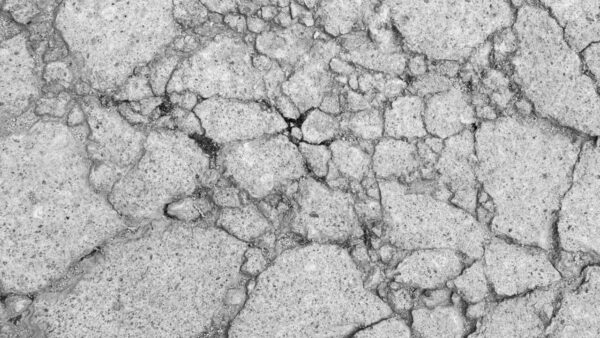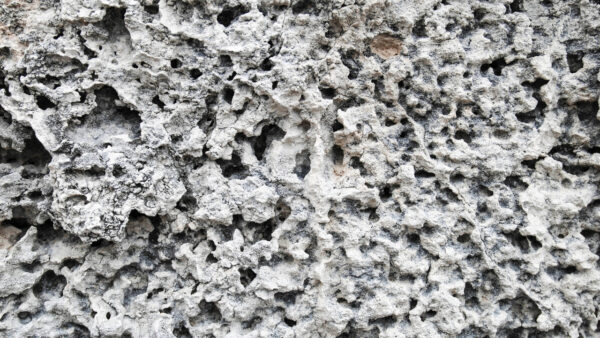The use of building materials is predominant in the field of construction, however, there is no field of engineering which is conceivable without their use. Owing to a great diversity in the types of building materials, it is important to fully understand their properties and behaviors under various conditions to make a conclusive statement about the choice of materials made for a project.
These properties also have a wide domain for readers to understand including performance in extreme weather conditions, strength at high loads, resistance to chemical attacks, etc. These principal properties of building materials determine their applications in engineering practices particularly the civil engineering works.
In addition, to economize building works, the comprehension of materials is of paramount importance. Otherwise, committing economic follies becomes unavoidable. This is because unless you are able to compare the performance of two materials in the right way, making a choice between them is difficult.
To optimize performance, cost and service life of materials for a project, the following physical and mechanical properties can serve a guiding tool to make the right choice.
Table of Contents
Physical Properties of Building Materials
Density
The density of a material is the ratio of its mass and volume and it is generally defined for homogenous materials such a steel. For heterogeneous materials such as concrete, the density varies within the structural component and cannot be strictly defined.
The densities of a few construction materials are given in the table below.
|
Material |
Density (kg/m3) |
|
Brick |
2500-2800 |
|
Stone (Granite) |
2600-2900 |
|
Tile |
1800-2200 |
|
2900-3100 |
|
|
Wood |
1500-1600 |
|
Steel |
7800-7900 |
|
Glass |
2500-2700 |
Types of Density
Bulk Density
The bulk of a material is the ratio of its mass and volume, including the volume of pores and voids within the material. This density of a material is a picture of its natural state. Generally, bulk density of materials is found to be lesser than their density.
The bulk density of a material governs its properties such as strength, heat conductivity, permeability, etc.
The bulk density of a few building materials is given in the table below.
|
Material |
Bulk Density (kg/m3) |
|
Brick |
1600-1800 |
|
Stone (Granite) |
2500-2700 |
|
Sand |
1450-1650 |
|
Pine Wood |
500-600 |
|
Steel |
7850 |
The ratio of bulk density of a material to its density is termed as the density index. The value of density index is usually less than unity. This means that no material in the world is cent percent solid or void-free. However, the extent to which the volume of a material is filled with solid matter can be determined using the density index.
Apparent Density
The apparent density of a substance is the ratio of its mass to its volume excluding the volume of voids and pores present in it.
The apparent density of a material is therefore, the density when only the solid matter is considered and the volume occupied by voids and pores is omitted. Hence, the apparent density generally has a greater value in comparison to the bulk density of a material.
Specific Weight
The specific weight of a material is a function of a material’s mass and volume when it is placed in the ambit of gravitational forces. Therefore, the value of specific weight depends upon the extent to which gravitational forces act. In other words, as the force of gravity fluctuates, the specific weight also changes.
Mathematically, specific weight is the product of density and gravitational acceleration acting on the material.
Specific Gravity
The specific gravity the property of a material that compares its density or unit weight with the respective density or unit weight of water when its properties are taken at a temperature of 4 degree Celsius.
Mathematically, the specific gravity (also termed as relative density) is the ratio of density of a substance to that of water.
Types of Specific Gravity
True or Absolute Specific Gravity
If true volume of a material that excludes the volume of permeable and impermeable voids is used to compute the density, the ratio of this density to that of water will give you the absolute specific gravity of a material.
However, this is not a practical tool to use in material calculations and is often avoided.
Mass Specific Gravity
If the volume of a material is computed including permeable and impermeable pores, the density so obtained is a realistic picture of the solid matter present in the material. The ratio of this density to the density of water will give you the mass specific gravity of the material.
Porosity

A porous natural stone
The porosity of a material tells us how much voids are present in a certain volume of a material. Therefore, mathematically, the porosity is the ratio of volume of voids to the total volume of any material.
The value of porosity of any material can be very useful in terms of predicting its behavior such as the material’s conductivity. Dense materials have a low value of porosity and can be used in construction works where higher mechanical strengths are required.
On the other hand, building materials having a higher porosity will generally not give the desired strength. For instance, some stones are inherently very porous. Therefore, they cannot be used for load-bearing purposes because under the influence of high loads they will break and crumble.
Void Ratio
The void ratio of a material is often confused with its porosity. The confusion seems to be reasonable since both of these parameters inform about the percentage volume of voids in a material.
However, the void ratio of a material is the ratio of volume of its voids to the volume of soil solids and not the total volume. Therefore, the void ratio percentage of a material can exceed 100 percent for materials that are extremely porous and have large open pores.
On the other hand, the porosity of a material cannot exceed 100 percent. This is because the volume of pores is expressed in terms of the total volume which is always greater than the volume of pores alone. Therefore, the percentage of their ratio is less than 100 percent.
Hygroscopicity
Some materials are capable of absorbing moisture from the air. This property of a material that informs about its tendency to absorb moisture from the air is termed as hygroscopicity.
The hygroscopicity of a material depends on factors such as its porosity, size of pores, surrounding conditions including relative humidity, air temperature, etc.
Water Absorption
Water absorption of a material is its ability to absorb and retain water. It is mathematically defined as the ratio of weight of water absorbed by the material to its total volume, including volume of pores, expressed as a percentage.
The properties of building materials are greatly influenced when they get saturated with water. In particular, it is observed that the compressive strength of most of the building materials gets altered with getting saturated.
The ratio of compressive strength of a material when it is saturated to its strength in dry state is called coefficient of softening and it informs about how much strength a material has reduced upon saturation.
Some clays upon saturation show a drastic decline in strength which practically drops to zero. Therefore, their coefficient of softening is zero. On the other hand, materials like glass and metals do not show any strength reduction and have the value of this coefficient equal to unity.
Weathering Resistance
The resistance of a material to deformation when it is subjected to alternate wet and dry conditions is called weathering resistance. Oftentimes when certain materials are tested under wet and dry conditions, they experience a reduction in their mechanical strength.
Weathering resistance of a material largely depends on its structural make-up and internal bonds. It a material has a sound particle geometry; it will offer appreciable resistance to weathering.
Frost Resistance
When saturated materials are subjected to freezing temperatures, the water present in the pores of the material freezes and its volume expands by 9 percent. As a result of this inevitable volume expansion within the voids, tensile stresses are produced within the material.
The ability of a material to resist and stay firm against these stresses produced due to alternate freezing and thawing cycles is termed as frost resistance.
Heat Conductivity
It is the ability of a material to conduct or allow the passage of heat through it. Heat conductivity is generally an inherent material property and depends on the internal structure of material, its porosity and the temperature that propels the process of heat exchange.
Materials having large pore sizes have a great heat conductivity because of the air present within the pores that catalyzes the heat exchange process. Similarly, moist materials show greater heat conductivity than dry materials.
The heat conductivity of a material becomes a major concerning factor for inside walls of a heated building.

The choice of building materials is important for internal heating system in a building.
Water Permeability
Permeability of a material is its ability to allow the passage of water through its pores under pressure. This property large depends on the size of pores within a material. Gravels are very permeable and clays are impermeable or practically very less permeable.
Thermal Capacity
Thermal capacity is the property of a material to absorb heat and it is described by its specific heat. When we go for calculating the thermal stability of walls of heated buildings, the thermal capacity of materials used becomes a factor of paramount importance.
For instance, concrete laying in winters requires understanding of thermal capacity of concrete and it must be duly heeded to in order to avoid on-site blunders.
Fire Resistance
It is the ability of a material to resist the action of fire without significant deformation and strength loss. The fire resistance of a material can be assessed by fire rating which is the time required by the opposite side of a material away from fire to get fire.
Refractoriness
Refractoriness is a material’s ability to withstand sustained or prolonged high temperature without deforming its shape or melting. In this regard, materials that can sustain a temperature of 1580 degree Celsius are known as refractory materials.
In our construction practices, we have refractory bricks that are specially designed and manufactured for withstanding high temperatures efficiently.

Refractory brick lining of a hearth
Chemical Resistance
Materials often suffer attacks from chemicals such as acids, alkalis, some gases or salts, etc. and these chemical attacks take a toll on their mechanical properties and performance. The ability of a material to withstand a chemical attack defines its chemical resistance.
For instance, concrete if has large porosity is vulnerable to chloride or sulphate attack. When this happens, a network of cracking is produced and the ability of concrete to further withstand applied stresses drops to zero and the structural members fails as a result.

Disintegration of concrete due to chemical attack
Durability
The durability of a material is its ability to perform well under extreme environmental conditions. Durable materials retain their original form, quality and serviceability when exposed to environment.
Exposure to environmental conditions involves testing a material’s resistance to weathering action, any chemical attack or any other process of deterioration.
Lack of durability leads to material deterioration that is physically manifested through cracking, spalling, delamination, pitting, etc.
Mechanical Properties of Building Materials
Strength
The strength of any material is its ability to resist any form of failure by developing stresses when subjected to applied loads. The applied action can be of a varying nature. It can be in the form of loads or moments and its nature may also vary.
The applied action on any body may tend to produce tensile stresses, compressive stresses, flexural stresses or impact stresses in it and the corresponding resistance offered by the material to their applied force affects is respectively called its tensile strength, compressive strength, flexural strength and impact strength.
Every material in the world, no matter how strong it is, fails at a particular load intensity. It is therefore, impractical to expect materials to be performing well under all loading conditions and intensities. However, in construction works, the strength of any material is the governing parameter for material selection.
Some materials such as concrete perform well under compression, others such as steel have excelled tensile strength. When selecting materials for construction works, the anticipated loading the material will be subjected to in its service life is to be carefully assessed and the choice is made accordingly.
Every material is not capable of performing well under all conditions. For example, steel does not perform well in areas where it is prone to rusting or corrosion. Similarly, concrete cannot perform well when subjected to tensile forces. Wood cannot take up load more than steel or concrete i.e., it fails at lesser loads; bricks and construction blocks do not perform efficiently in earthquake-prone areas. Therefore, a wise decision is to be made as to which material should be used for any construction work keeping in view the economic and environmental constraints.
Hardness
The hardness of any material is its ability to resist scratching or wearing action caused by a harder material. In other words, the resistance offered by a material to penetration of a harder body is termed its hardness.
It is measured on Mohs scale that comprises ten minerals arranged in ascending order of their hardness. For metals and plastics, the hardness is found by the indentation of a steel ball.
Elasticity
It is the ability of a material to restore its form or shape when the applied loading affect is removed. This effect is confined within the elastic range of a material wherein the stress remains proportional to the corresponding strain.
If any load is applied within the elastic limit, the deformations are recoverable. However, beyond this limit, plastic or permanent deformations begin to occur which are irrecoverable.
The determination of elastic limit of materials is important to understand that to which limit a material will develop recoverable deformations and to what load should it be subjected so as to prevent any plastic deformation in it.
The ratio of stress to strain within the elastic limit of a materials is termed as its modulus of elasticity. Larger is the value of modulus of elasticity, lesser is the strain in the material at high loads.
The modulus of elasticity of a few materials is given in the table below.
| Material | Modulus of Elasticity (GPa) |
| Steel | 200 |
| Concrete | 30-50 |
| Glass | 72 |
| Wood | 5-17 |
Plasticity
The plasticity of a material is its ability to resist applied loading by undergoing plastic deformation without cracking or any volumetric change. For instance, steel, copper and hot bitumen are a few plastic materials.
Material Behavior Under Stress
When building materials are subjected to stresses, their characteristic behaviors under the influence of these stresses are ductility, brittleness, stiffness, flexibility, toughness, malleability and hardness.
Let us discuss these characteristics one by one.
Ductility
The ductility of a material is the representation of its post-peak behavior. Materials such as steel, when loaded to the peak load (also called the ultimate strength), do not fail immediately after it, instead, the failure occurs gradually and steel is capable of developing strains even after the peak load.
This ability of a material to develop strain even after the attainment of its ultimate strength is termed as ductility. A ductile material therefore, ruptures at a strain much higher than the ultimate strain.
Brittleness
The term brittleness indicates the property of a material that is just the opposite of ductility. Therefore, a brittle material is one which immediately ruptures once it reaches its strength limit. As a consequence of abrupt failure, brittle materials do not give any signs of warning prior to their failure and upon the commencement of cracking, the material collapses.
An example of brittle material is concrete. Even under compressive forces where the concrete performs well, it fails immediately after the commencement of cracking i.e., once the peak load is attained, its strength gets exhausted instantaneously.
Other examples of brittle materials are cast iron, brick, stone, etc.
Stiffness
The stiffness of a material is the amount of load required for developing a unit deflection or strain in the material. Stiff materials require a greater load magnitude for a certain deformation in comparison to less-stiff materials that develop the same deformation at a lesser load.
Flexibility
The flexibility of a material is the reciprocal of its stiffness. In other words, it is the amount of deformation or deflection a material shows when it is subjected to a unit load. Flexible materials have low modulus of elasticity and bend considerably.
Toughness
Toughness of a material is the total energy absorbed by the material till rupture. Ductile materials owing to their post-peak behavior, have greater toughness than brittle materials.
The toughness of a material depends on its strength and flexibility. Therefore, tougher materials can withstand heavy shocks for a longer duration of time.
Malleability
Malleability is the ability of a material to be hammered into sheets without getting ruptured. It depends upon the ductility and softness of a material. Copper is the most malleable material.

Copper, a malleable material








